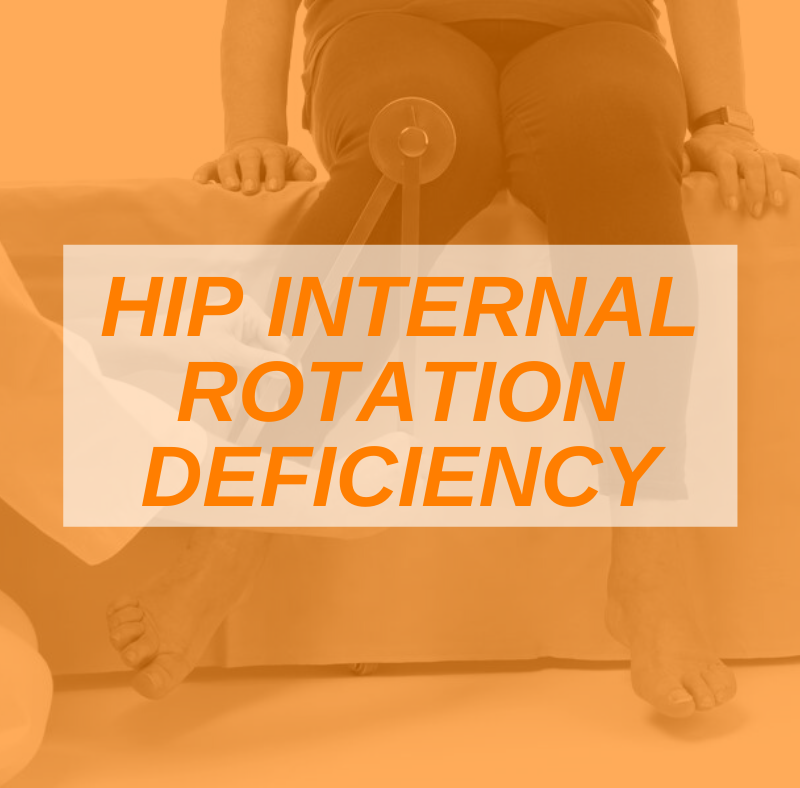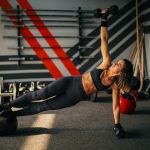
A body lacking internal hip rotation is like a car with no back wheels. Sure, it might keep going, and even steer, but it’s gonna do some damage along the way. In the human body, that missing ROM (range of motion) is often a significant contributor to back, hip, and knee pain. Unfortunately, promoting this important movement in our bodies has often gone out the window in favor of external rotation exercises (think pigeon pose or butterfly stretches), and I’d like to suggest something that could change your personal training clients’ life, or at minimum, your functionality, as it has many of my patients in my Sports Chiropractic practice: Achieve healthy internal hip rotation.
Do it for yourself, do it for your clients. Here I’ll discuss the background, problems, and, in the next blog, solutions to this seemingly simple subject.
Defining Poor Internal Hip Rotation
Hip Internal Rotation Deficiency (HIRD) is present in 95% of the athletic population I work with, being the underlying cause of my clients’ hip pain, knee pain, ankle issues, even low back pain. How do we measure this? Easy – find a flat surface to sit on with knees bent (like a chair) and, while keeping the thigh stable and knee pointed forward, bring the heel laterally/outside as far as it can go. If you have a goniometer, you can line it here at the knee joint.
Yes, the heel is moving away from the body, but if you look at what the femur is doing, the top/anterior portion of it is rotating towards your midline: internal rotation. Most people will have less than 30 degrees (like 10-20) or notice a big difference from side to side. As we’ll discuss, average isn’t always healthy. Even some of my highest-level athletes had negative internal rotation before we started working on it. Yeah, they came in STUCK in 5-10 degrees of external hip rotation.
In a standing postural analysis, you might see most of your clients standing “toes out” on one or both sides. This is an external rotation preference. It’s pretty normal when someone is an asymmetrical athlete (aka soccer, baseball, ultimate frisbee, etc.), overweight, or has a belly from pregnancy: our ability to get pure flexion from the hip starts turning into a litttttle flexion with a LOT of abduction and external rotation as a compensatory mechanism. Again, totally common, but not healthy.
You see, when our bodies prefer a range of motion like this, our ‘neutral’ changes. We don’t often actually lose total range of motion – it just shifts one direction.
Example: A dodgeball player has 180 degrees total ROM in their NON-DOMINANT shoulder, with 90 degrees external and 90 degrees internal rotation. Their throwing arm would likely also show 180 degrees total, just with more like 135 degrees external rotation, and 45 degrees internal.
Is this unhealthy? Maybe, but more often I think of it as an appropriate adaptation for their specific sport. There has to be a good balance between stability and mobility. Such an adaptation is a simple proof of that – the thrower gains a little external rotation, but loses a little internal on their throwing side. The problem with our hips is that our external rotation preference, or rather lack of internal rotation, is likely not a helpful adaptation, as much as a result of repetitive stress and compensation.
Why a Lack of Internal Hip Rotation is a Problem
We’ve known (or at least suspected) since the 90s that HIRD can be problematic. Back then it was suggested that overuse combined with limited internal hip rotation leads to soft tissue scarring, then reflex muscle spasm, then further limited free hip ROM.
Even as recent as 2019, research demonstrated that athletes with less than 30 degrees internal hip rotation are over twice as likely to have a lower extremity injury during their season. Yep, that tight butt muscle you’re always trying to roll out may just be a muscle spasming to reflexively protect a scarred-up posterior joint capsule at the hip. On top of that, the pain usually just causes a feedback loop, further tightening up those muscles.
HIRD has also been linked to (and often misdiagnosed) as FAI, or Femoral Acetabular Impingement. This is where the acetabulum (hip joint) is so arthritic and irritated that extra bone has formed at the rim, further causing pain, pinching, and significantly limiting normal hip ROM. As alluded to before, HIRD usually has manifested in chronic sharp, achy, and dull pains at the hip joint, so this mix-up is understandable. It’s also been suggested that HIRD can lead to FAI, which is consistent with what I’ve seen in the clinic.
There are a few simple movements that can mobilize the hip joint and free up the posterior capsule to allow a greater range of motion.
How to Improve Internal Hip Rotation
There are lots of potential solutions out there if you start Googling….and they’re…okay. Look up any YouTube video on hip rotation and 90% will be about promoting external rotation. You may proceed to face-palm here. Now, look up internal hip rotation and 90% will be about the muscles. Sorry, gurus…this isn’t usually a muscular issue. Strengthening chronically hypertonic and spasmed musculature doesn’t end well. Just like with anything else, we need to keep the key issues in mind when appraising solutions:
- Limited internal hip rotation puts us at a significantly higher risk of a variety of injuries
- Though we may see tight or weak muscles, the culprit is usually a tight and scarred-up posterior joint capsule
- Capsules respond well to shear and rotation
The remaining solutions all end up hitting employing the same approach to reach a solution: using movement with compression to open up that hip joint. For the average “sticky” hip, it takes me about 8-10 seconds in clinic to get my patients to 45 degrees internal hip rotation.
That’s right, not 30, not 35, but 45 degrees. I find that 30 degrees is often “good enough” for their bodies to handle daily stresses, but my clients that can get to 45 degrees consistently I see the issues clear up more quickly, and performance in their sport is significantly improved.
Think of a soccer player – as they kick, one foot is planted while the rest of the body begins to rotate towards that foot. Same with a throwing sport, the planted leg is suddenly supporting the whole body, ballistically, while in relative internal hip rotation. Even just walking and turning, look at your pivot leg: you’ll notice that if you turn to the left, the left planted knee will be pointed across your body, again demonstrating how internal rotation can be vitally important at the hip or stresses will emerge elsewhere. So aim for 45 degrees…but maybe try getting just above 30 first.
The Technique
I use a hip scouring technique (think mortar and pestle) the manually mobilize the hip, and my patients kept asking for a way to do this at home. So we came up with one. It’s been tested for years on countless hip-happy patients and very method-adjacent to some of the best hip mobilizations out there. Now it comes to you!
Note: This doesn’t require any equipment, only you and a floor!
- Start in quadruped position: Hands, knees, and feet on the floor, shoulders stacked over hands, hips over knees, toes curled under.
- Rotate the hips in a circular motion, making as large a circle as possible. Make sure to sit far back into your hips while maintaing stability in the spine.
- Perform five rotations in each direction.
See video below for a demo and a progression.
As Aristotle once said, “The hips are the gateway to the soul,” or something like that. But just to recap for the TLDR crowd:
- Hip Internal Rotation is necessary for everything from walking, to squatting, to sport-specific motions
- A lack of this can cause physical stresses to manifest elsewhere – if the hip isn’t moving well, something else will compensate (ACL anyone?)
- Most active people have less than 30 degrees internal hip rotation, which puts them at over 2xtwicethe risk of injury
- The core of the problem is usually a scarred-up joint capsule and adhesion of other passive and active structures at the posterior hip
- Use compression and rotation with tri-planar motion to fix it!
- Now you can play hacky-sack again!
I hope I have underscored the gravity of lost internal hip rotation and how it can negatively affect performance or cause pain. As fitness professionals, we can assess for such deficits, employ techniques to help your clients resolve HIRD, and restore a healthy range of motion in the hip joint.






